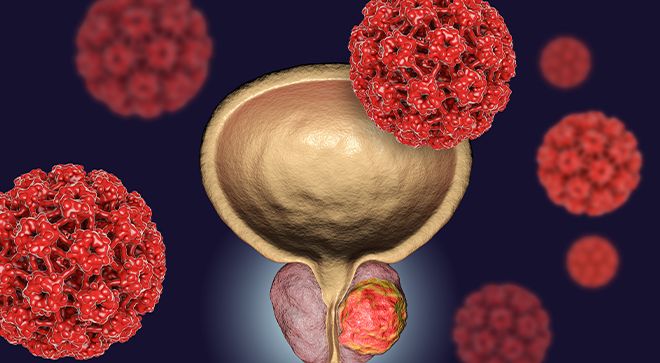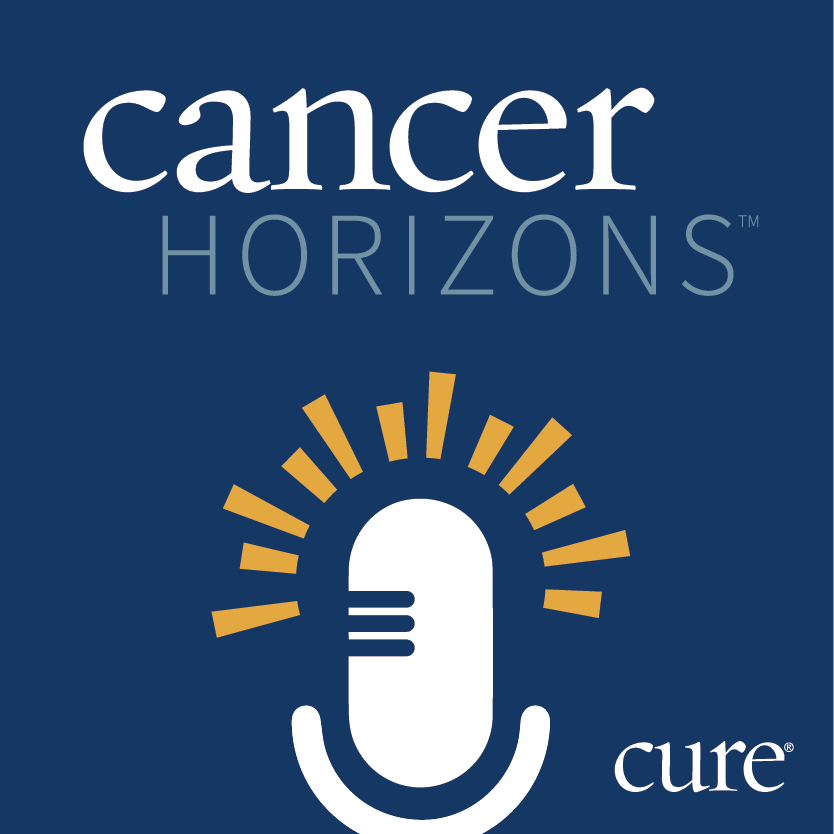For patients with metastatic hormone-sensitive prostate cancer (mHSPC), efficacy outcomes were improved following treatment with Nubeqa (darolutamide) in combination with androgen deprivation therapy (ADT) compared with placebo plus ADT irrespective of disease volume, according to findings from the phase 3 ARANOTE trial.
Data from a subgroup analysis of ARANOTE presented during the 2025 ASCO Genitourinary Cancer Symposium demonstrated that patients with high-volume disease who received Nubeqa (315 patients) achieved a median radiological progression-free survival (rPFS) of 30.2 months compared with 19.2 months among those who received placebo (157 patients). Patients with low-volume disease achieved a median rPFS of not reached (NR) in the investigational arm (131 patients) versus NR in the control arm (66 patients).
“The phase 3 ARASENS study demonstrated a greater than 30% reduction in the risk of death with the combination of [Nubeqa] plus ADT and docetaxel, which has become a standard of care for the treatment of patients with mHSPC,” Dr. Fred Saad said during a presentation of the data. “In ARANOTE, [Nubeqa] plus ADT significantly improved rPFS, reducing the risk of radiological progression or death by 46%. Volume of disease is a prognostic factor for patients with mHSPC and here we report a post-hoc analysis of ARANOTE to evaluate the efficacy and safety of [Nubeqa] by disease volume.”
Saad is the director of prostate cancer research at the Montreal Cancer Institute, a uro-oncologist in the Urology Department, and a full professor in the Department of Surgery at the Centre Hospitalier de l'Université de Montréal in Canada.
Glossary:
Radiological progression-free survival (rPFS): the time from treatment initiation to radiographic disease progression or death.
ECOG performance status of 0 to 2: a measure of a patient’s daily functioning, where 0 indicates full activity, and 2 indicates the ability to perform self-care but not work.
Visceral metastases: cancer that has spread to organs such as the liver, lungs or brain.
Gleason Score: a grading system that evaluates the aggressiveness of prostate cancer based on microscopic tumor appearance.
Overall survival (OS): the time from diagnosis or treatment start to death from any cause.
Time to initiation of subsequent anticancer therapy: the duration from treatment start to the beginning of the next line of cancer treatment.
Time to metastatic castration-resistant prostate cancer (mCRPC): the time from initial treatment to the development of resistance to hormone therapy with metastases.
Time to prostate-specific antigen (PSA) progression: the duration until a confirmed rise in PSA levels, indicating potential disease progression.
Rates of undetectable PSA: the proportion of patients achieving PSA levels below the detection threshold.
Time to pain progression: the time until a clinically significant worsening of pain related to cancer.
In November 2024, the FDA accepted a supplemental new drug application (sNDA) seeking the approval of Nubeqa plus ADT for the treatment of patients with mHSPC. The sNDA was supported by previous data from ARANOTE. Findings from ARANOTE presented during the 2024 ESMO Congress showed that regardless of disease volume patients who received Nubeqa plus ADT (446 patients) achieved a median rPFS of NR versus 25 months in the placebo arm (223 patients).
Diving Into the ARANOTE Trial and Baseline Characteristics
ARANOTE was a global, double-blind study that enrolled patients with mHSPC who had an ECOG performance status of 0 to 2. Patients were stratified based on the presence of visceral metastases (yes versus no) and receipt of prior local therapy (yes versus no). Eligible patients were randomly assigned 2:1 to receive Nubeqa at a dose of 600 milligrams twice daily or placebo, both in combination with ADT.
The primary end point was rPFS by central blinded review. Secondary end points included overall survival (OS), time to initiation of subsequent anticancer therapy, time to metastatic castration-resistant prostate cancer (mCRPC), time to prostate-specific antigen (PSA) progression, rates of undetectable PSA (less than 0.2 ng/mL), time to pain progression and safety.
In the post-hoc analysis that Saad presented, patients were evaluated based on disease volume per CHAARTED criteria. High-volume disease was defined as the presence of visceral metastases and/or at least four bone lesions with at least one lesion beyond the vertebral bodies and pelvis. Low-volume disease was defined as not meeting the high-volume criteria.
At baseline, the median age of the overall patient population was 70 years. Most patients had a Gleason score of at least 8 at initial diagnosis (68.3%) and de novo metastasis at initial diagnosis (72.5%). The study also included patients with visceral metastases (12%), those who had received prior local therapy (17.9%), and those with an ECOG performance status of 0 (49.8%). The median serum PSA level at baseline was 21.3 ng/mL.
Further Efficacy and Safety Data from the Analysis
Additional findings from the post-hoc analysis showed that patients in the high- and low-volume groups experienced a delayed time to mCRPC with Nubeqa plus ADT versus placebo plus ADT, which was consistent with the benefit observed in the overall population. Patients with high-volume disease in the investigational and control arms achieved a median time to mCRPC of NR versus 12.4 months, respectively. In the low-volume group, the median time to mCRPC was NR versus 19.8 months, respectively.
The addition of Nubeqa to ADT also led to a benefit compared with placebo plus ADT across all secondary end points examined. The greatest benefits were reported in time to initiation of subsequent systemic anticancer therapy in patients with low-volume disease, time to PSA progression in patients with low-volume disease and time to PSA progression in patients with high-volume disease.
“OS results were immature, but suggestive of a benefit with [Nubeqa] versus placebo,” Saad noted.
Evaluable patients with high-volume disease in the Nubeqa arm (304 patients) had undetectable PSA levels 24, 36 and 48 weeks after random assignment at rates of 44%, 48% and 50%, respectively; 55% of these patients achieved undetectable PSA at any time. Comparatively, patients in the placebo arm (148 patients) achieved undetectable PSA at rates of 11%, 13%, 14% and 16%, at the respective time points.
Patients with low-volume disease who received Nubeqa (121 patients) also experienced undetectable PSA levels at higher rates compared with those who received placebo (63 patients) at the 24- (72% versus 17%, respectively), 36- (78% versus 19%) and 48-week (79% versus 19%) time points. Patients experienced undetectable PSA at any time at rates of 83% versus 25%, respectively.
In terms of safety, patients with high-volume disease who received Nubeqa (314 patients) or placebo (156 patients) both experienced any-grade treatment-emergent side effects (TEAEs; 93% versus 91.7%, respectively), grade 3 (severe) or 4 (life-threatening) TEAEs (31.2% versus 31.2%), serious TEAEs (28.3% versus 25.6%) and TEAEs leading to study drug discontinuation (7.3% versus 8.3%). Patients with low-volume disease in the Nubeqa (131 patients) and placebo (65 patients) arms also experienced any-grade TEAEs (86.3% versus 86.2%), grade 3 or 4 TEAEs (29.8% versus 26.2%), serious TEAEs (12.2% versus 18.5%) and TEAEs leading to study drug discontinuation (3.1% versus 10.8%).
“Efficacy outcomes with [Nubeqa] plus ADT were improved versus placebo plus ADT regardless of disease volume,” Saad said in conclusion. “[Nubeqa] plus ADT was well tolerated in both high-volume and low-volume subgroups with low treatment discontinuation rates consistent with the overall population and reconfirming the established tolerability of darolutamide. Patients with low-volume mHSPC had marked treatment efficacy with minimal treatment burden.”
References:
- “Darolutamide plus ADT in patients with metastatic hormone-sensitive prostate cancer (mHSPC) by disease volume: subgroup analysis of the phase 3 ARANOTE trial.” By Dr. Fred Saad, et al. J Clin Oncol.
- “Efficacy and safety of darolutamide plus androgen-deprivation therapy (ADT) in patients with metastatic hormone-sensitive prostate cancer (mHSPC) from the phase III ARANOTE trial.” By Dr. Fred Saad, et al. Ann Oncol.
For more news on cancer updates, research and education, don’t forget to subscribe to CURE®’s newsletters here.





